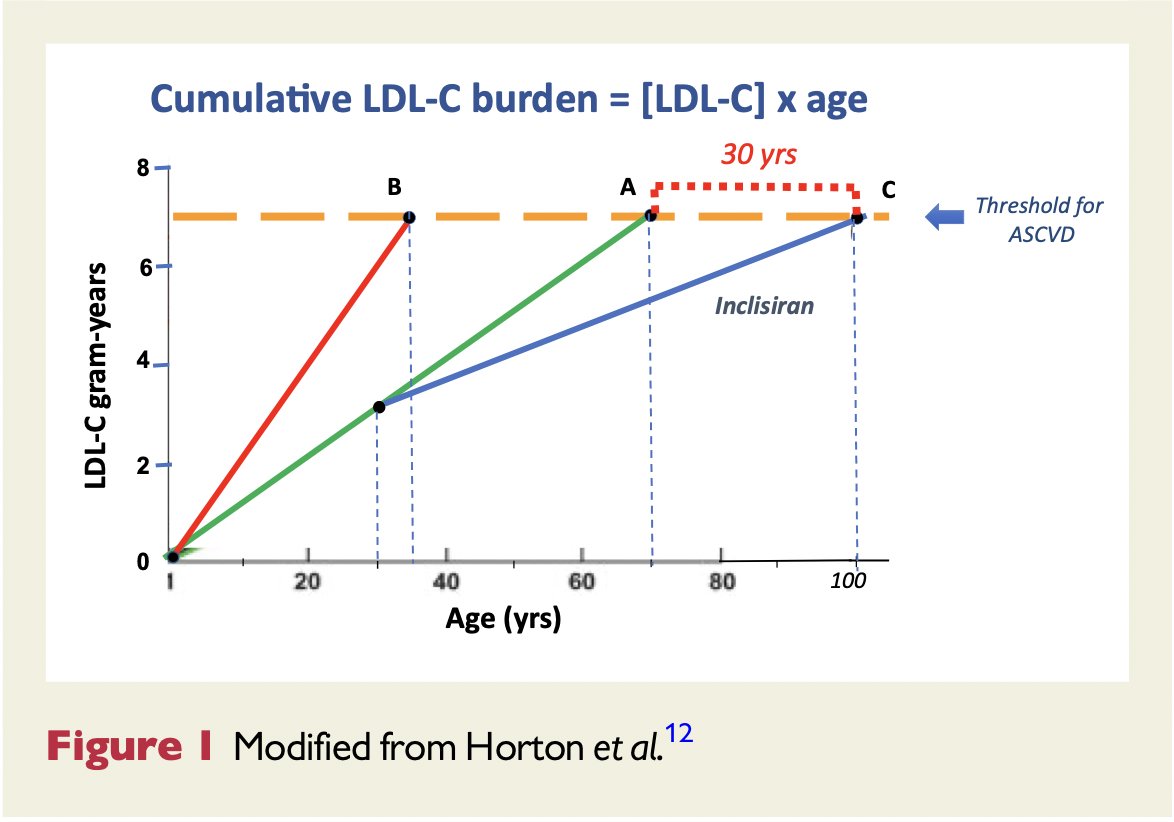
A single IV infusion -->
96% lower plasma ANGPTL3 nearly 2y later in non-human primates!!
Coming era of "molecular surgery":
* one time Rx
* permanent switch off disease-causing gene in liver
* lifelong benefit
#ACC22
@ACCinTouch $VERV @VerveTx
newsfilter.io/a/45db4c967cb4…
96% lower plasma ANGPTL3 nearly 2y later in non-human primates!!
Coming era of "molecular surgery":
* one time Rx
* permanent switch off disease-causing gene in liver
* lifelong benefit
#ACC22
@ACCinTouch $VERV @VerveTx
newsfilter.io/a/45db4c967cb4…

some ASCVD patients start with very-high LDL
and
still do not reach LDL goal
despite oral standard-of-care and PCSK9i
and
still do not reach LDL goal
despite oral standard-of-care and PCSK9i

In these patients,
ANGPTL3 inhibition with mAb (Evkeeza) proven to work,
to lower LDL-C by ~50% on top of oral SOC and PCSK9i
ANGPTL3 inhibition with mAb (Evkeeza) proven to work,
to lower LDL-C by ~50% on top of oral SOC and PCSK9i

Complete lack of ANGPTL3 well-tolerated in humans:
human ANGPTL3 knockouts:
very low LDL-C, no liver fat
human ANGPTL3 knockouts:
very low LDL-C, no liver fat

Key to LDL-C lowering with ANGPTL3 inhibition:
NEED NEAR-COMPLETE INHIBITION
this is clear from the human genetics:
compared with wild-type,
het deficiency (50% deficiency) led to minimal lower LDL-C
with 100% deficiency (human knockouts), 50% lower LDL-C
NEED NEAR-COMPLETE INHIBITION
this is clear from the human genetics:
compared with wild-type,
het deficiency (50% deficiency) led to minimal lower LDL-C
with 100% deficiency (human knockouts), 50% lower LDL-C

Grateful to @ambellinger and @VerveTx team
who over the last 3 years
have moved ANGPTL3 program from concept
to
proof-of-concept in NHPs!
👏👏
Full #ACC22 presentation here: ir.vervetx.com/static-files/6…
who over the last 3 years
have moved ANGPTL3 program from concept
to
proof-of-concept in NHPs!
👏👏
Full #ACC22 presentation here: ir.vervetx.com/static-files/6…
These developments raise the prospect of
sequential editing of two genes (PCSK9 followed by ANGPTL3)
for inactivation of two LDL-raising pathways in the same individual
Stay tuned for that thread.
sequential editing of two genes (PCSK9 followed by ANGPTL3)
for inactivation of two LDL-raising pathways in the same individual
Stay tuned for that thread.

• • •
Missing some Tweet in this thread? You can try to
force a refresh





























